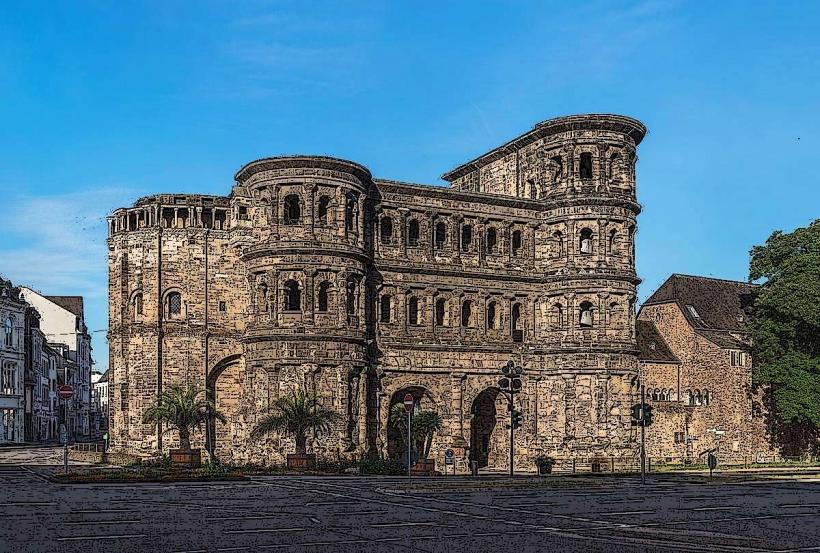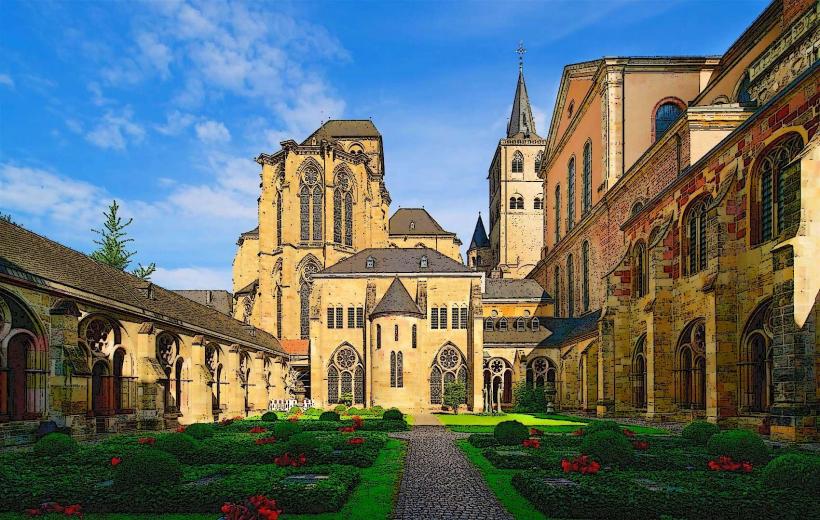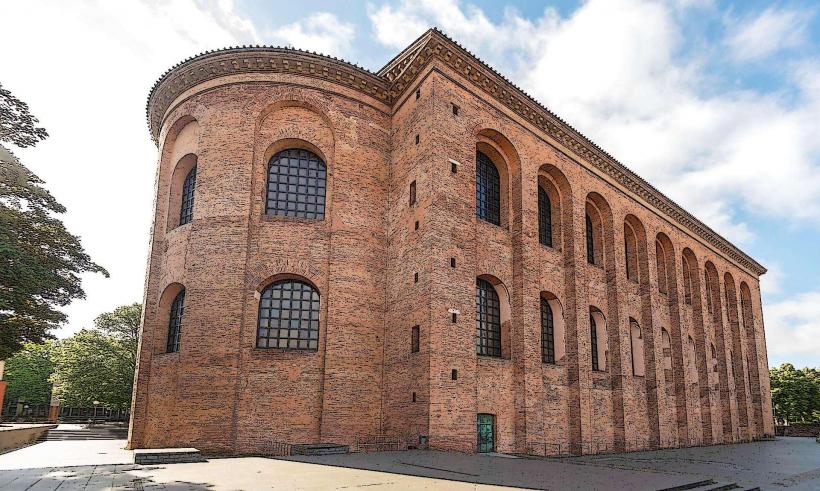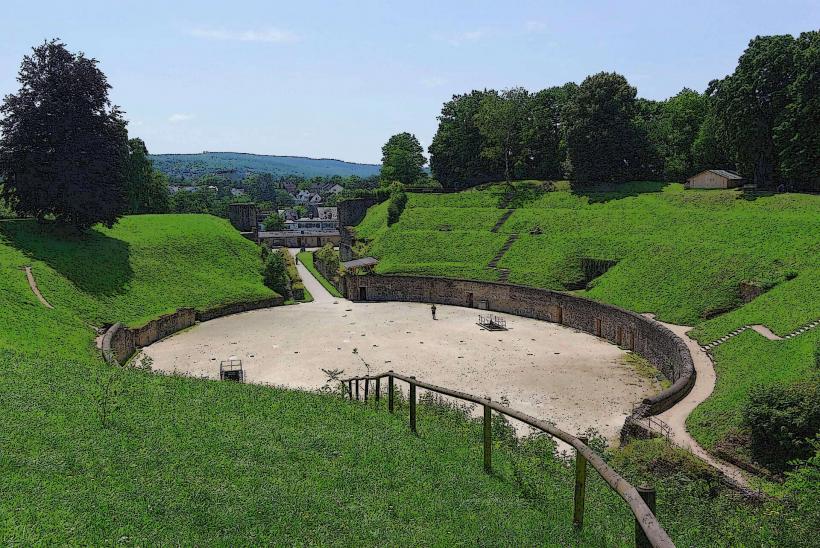Information
City: TrierCountry: Germany
Continent: Europe
Trier is a city in western Germany, located along the Moselle River in the state of Rhineland-Palatinate. Often regarded as one of the oldest cities in Germany, Trier has a rich and diverse history that spans over 2,000 years. Its historical significance, ancient Roman heritage, and architectural landmarks make it a key destination for history enthusiasts and travelers seeking to explore the foundations of European civilization.
1. Historical Significance
- Roman Foundation: Trier was founded by the Romans around 16 BC as Augusta Treverorum and became one of the empire's most important cities in the region. It served as the capital of the Roman province of Gallia Belgica and later as the capital of the western half of the Roman Empire during the reign of Emperor Constantine the Great in the early 4th century.
- Constantine’s Influence: Trier is particularly associated with Emperor Constantine, who was born here and later became the first Christian emperor of Rome. His influence is still evident in the city's structures and Christian heritage. The city's historical importance continued through the Middle Ages, when it became an ecclesiastical center and the residence of archbishops.
2. Roman Architecture and Monuments
- Porta Nigra: The Porta Nigra (Black Gate) is one of Trier’s most iconic landmarks and a symbol of the city’s Roman heritage. This massive Roman city gate, built in the 2nd century AD, is remarkably well-preserved and made of sandstone that has darkened over time, giving it its name. The Porta Nigra is the largest Roman city gate north of the Alps and is a UNESCO World Heritage Site.
- Trier Amphitheater: The Roman Amphitheater was built in the 2nd century AD and could seat around 20,000 spectators. It was used for gladiatorial games, public spectacles, and executions. Visitors can explore the remains of the arena and visit the underground chambers, where gladiators and animals were kept before battles.
- Roman Baths: The Imperial Baths (Kaiserthermen) in Trier were part of an elaborate Roman bathing complex. The ruins of the baths offer a glimpse into the grandeur of Roman public life, with sections of the bathhouse, hot rooms, and cold plunge pools still visible today.
- Roman Bridge: The Roman Bridge (Rheinische Brücke), built around 100 AD, is one of the oldest still-operating bridges in Europe. It spans the Moselle River and connects the city center with the surrounding region. The bridge’s structure reflects Roman engineering expertise and has been used continuously for over two millennia.
3. Trier Cathedral (Dom St. Peter)
- UNESCO World Heritage Site: The Trier Cathedral is the oldest bishop’s church in Germany, with a history dating back to the 4th century AD. It is known for its blend of architectural styles, including Romanesque, Gothic, and Baroque elements.
- Holy Tunic: The cathedral is famous for housing the Holy Tunic, a relic believed to be the garment worn by Christ before his crucifixion. The Holy Tunic is an important Christian relic, and it is displayed during special religious occasions, including a famous pilgrimage event that occurs once every few decades.
- Architectural Highlights: The cathedral is renowned for its impressive Romanesque architecture, stunning interior, and the Gothic Chapel. The ornate high altar and the crypt, where many of Trier’s bishops are buried, are significant features of the cathedral.
4. Constantine Basilica (Konstantin-Basilika)
- Roman Monument: The Constantine Basilica was originally built as a palace church for Emperor Constantine in the 4th century. It is one of the largest ancient Roman buildings to have survived in its original form. Today, the basilica houses the Trier Stadtmuseum, which showcases the city’s Roman and medieval history.
- Architectural Features: The basilica’s large, open interior, with its towering columns and simple but elegant design, is a testament to Roman architectural ingenuity. The building’s size and shape were designed to convey the grandeur of the emperor’s authority and the rise of Christianity in the empire.
5. Thermal Baths and Roman Landmarks
- Thermen am Viehmarkt: The Roman Bathhouse at Viehmarkt is another significant Roman structure in Trier, which was part of a larger complex used by both locals and visitors. The baths, which date back to the 2nd century, are part of an extensive archaeological site that reveals much about daily life during Roman times.
- Barbara Baths: The Barbara Baths are another set of Roman ruins in Trier, dating from the 3rd century. The baths are part of a large complex that also includes an early Christian church, reflecting the transformation of Trier from a Roman city to a center of Christian worship.
6. Trier's Old Town (Altstadt)
- Charming Streets and Squares: The Old Town of Trier is a delight to explore, with its mix of Roman ruins, medieval buildings, and charming squares. Hauptmarkt, the main square, is the center of the Old Town and is surrounded by beautiful buildings, shops, and cafes.
- The Electoral Palace (Kurfürstliches Palais): The Electoral Palace, built in the 18th century, stands at the foot of the city’s Roman ruins and is a prime example of Rococo architecture. The palace is home to a beautiful park and hosts various cultural events and exhibitions.
- St. Gangolf’s Church: St. Gangolf’s Church, a 13th-century church, is located in the heart of Trier’s Old Town. It features a mix of Gothic and Romanesque styles and is one of the many picturesque churches in the city.
7. The Karl Marx House
- Birthplace of Karl Marx: Karl Marx, the philosopher and political theorist, was born in Trier in 1818. His house, now a museum, provides insights into his early life and intellectual development. The Karl Marx House (also called the Marx Memorial), located on Brückstrasse, showcases the life and ideas of Marx through exhibits, manuscripts, and interactive displays.
- Historical Importance: The house is a significant site for understanding Marx's influence on modern political thought. Visitors can learn about his theories, his life in Trier, and the historical context in which his ideas were developed.
8. The Moselle River and Wine Culture
- Moselle Wine Region: Trier is located in the heart of the Moselle wine region, one of the most famous wine-producing areas in Germany. The region is known for its steep vineyards and production of Riesling wine, which is highly regarded worldwide.
- Wine Tasting: Visitors to Trier can tour the vineyards, visit local wineries, and participate in wine tastings to sample the region’s acclaimed wines. The scenic Moselle River, with its winding bends and picturesque hillsides, adds to the charm of the wine culture.
- Wine Festivals: Trier hosts a number of wine festivals throughout the year, where visitors can sample the best local wines, enjoy regional food, and take in the beauty of the riverbanks.
9. Museums and Cultural Venues
- Rheinisches Landesmuseum: The Rheinisches Landesmuseum (Rhineland State Museum) in Trier is one of Germany’s leading archaeological museums. It has an extensive collection of Roman artifacts, including sculptures, pottery, and coins, and it provides a comprehensive overview of the region’s history, from the prehistoric era to the Middle Ages.
- Theatre Trier: The Theatre Trier is one of the oldest theaters in Germany and offers a range of performances, including plays, musicals, and operas. The theater is an important cultural institution and hosts numerous events throughout the year.
10. Festivals and Events
- Trier Christmas Market: The Trier Christmas Market is a popular seasonal event, held in the city’s historic squares. It offers festive food, handcrafted gifts, and local wines, providing a warm, festive atmosphere during the holiday season.
- Roman Festival: Every year, Trier hosts a Roman Festival that celebrates the city’s ancient Roman roots. The festival includes reenactments, music, Roman food, and other activities that immerse visitors in the history of the Roman Empire.
11. Accessibility and Transportation
- Well-Connected: Trier is well connected by train, bus, and car. The city has a central train station (Trier Hauptbahnhof) with connections to other cities in Germany and neighboring countries, particularly Luxembourg and France.
- Walking and Biking: Trier’s city center is pedestrian-friendly, and visitors can easily explore most of the key attractions on foot. The surrounding countryside and vineyards are also perfect for cycling and hiking.
Conclusion
Trier is a city that combines the grandeur of its Roman past with a rich cultural and religious heritage. From the iconic Porta Nigra and Roman baths to the stunning Trier Cathedral and the birthplace of Karl Marx, the city offers a fascinating journey through history. The picturesque Moselle River, thriving wine culture, and vibrant festivals make Trier a great destination for both history enthusiasts and those seeking relaxation amidst beautiful surroundings. Whether you're exploring ancient ruins or enjoying a glass of Riesling by the river, Trier is a place that invites both discovery and enjoyment.







